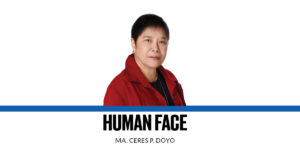It is so easy to vilify the tambay. It is easy to follow Ben Diokno’s line of thinking and say: “Look at them, they’re just idling around, doing nothing! If only they would work instead, they would not be poor.”
And, yes, it is very easy for politicians like President Duterte to go after the tambay, as such an act would resonate with the out-of-touch upper and middle classes, as well as the nouveau lower middle class that doesn’t want to be associated with the poor.
Looking at the tambay (also spelled ‘istambay’) more closely, however, we realize that there is more to these people than meets the eye — and that we should not be quick to judge them as idle youth or potential criminals.
In the first place, when we see half-naked men in the literal or metaphorical kanto, we assume that they have somewhere else to hang out in — like living rooms, porches, cafés. But “space” for the poor is extremely limited, and this is particularly true in urban areas, where much of the public space has been privatized, and where the only affordable housing are in the narrow, overcrowded, poorly-ventilated confines of the slums (the heat also explains the shirtlessness, an understandable recourse in a tropical country). The street is the only free public space available to many Filipinos, and it often falls on the men, especially the younger ones, to stay outside while the women stay indoors.
Of course, young Filipinos generally like hanging out with friends, and curfew hours for doing so no longer make sense in the context of our 24/7 economy. To see those on the street as any different from those in Starbucks is unjust; to arbitrarily label some of them as “tambays” is abusive, and to penalize them is unconstitutional: a violation of the right to liberty and due process.
Mr. Duterte’s directives and outdated ordinances notwithstanding, the police should immediately discontinue their misguided anti-tambay campaign.
Looking at specific situations can lend additional insights. In my own ethnographic research among young men in an urban poor community, I learned that what might appear to outsiders as idleness may actually be part of an informal economy which involves a lot of “waiting” (e.g. tricycle drivers seem idle for hours before their next turn). Hanging out in a fixed place, moreover, is a way for some youths to announce their availability for various income opportunities, from portering and street vending to construction and sex work.
An oft-invoked justification for going after tambay folk is their link to drugs and crime, but is there evidence to make such generalizations? While I’m all for going after people, tambay or otherwise, who do commit crimes, labeling all tambay as “criminals” or treating them as such is anti-poor and discriminatory. Again, while granting that some youths may be truly lazy or criminal, many of the so-called tambay are actually willing to quit inactivity and illegal activities (including drug use) — if they would be given the opportunity to do so.
The sociologist Clarence Batan notes that negative misconceptions and prejudices about the tambay have existed for decades, adding that the issue has largely been framed in individual, rather than social, terms: “The stereotypical image of the istambay… is rooted in an understanding that being an istambay is due to personal deficiencies (e.g., having low self-esteem, lack of interest in studying, laziness) rather than to external social factors that may have caused their inactivity.”
These “social factors”, as discussed or hinted above, include poor urban planning, overpopulation and income inequality, to which we can add the lack of education and employment opportunities, failed economic policies and, ultimately, a failure of leadership.
Who in our government will talk about these inconvenient truths? Who among our leaders will elevate public discourse by granting rightful nuance to complex issues? For populists like Mr. Duterte, the easy choice is to blame the tambay for social problems, rather than to acknowledge the social problems that force them to be out on the streets in the first place.
Follow @gideonlasco on Twitter. Send feedback to mail@gideonlasco.com.


